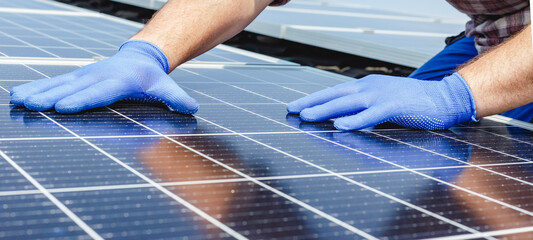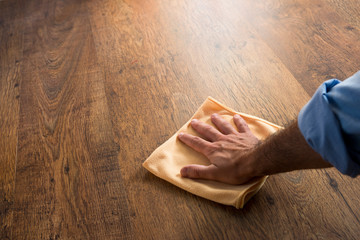Off Grid Solar is a renewable source of energy that produces clean, green electricity. It can be used to power homes, businesses and even cars. However, it is important to consider the benefits and drawbacks of this energy source before deciding on a system.
Labor and installation costs make up about 7% of the total cost of a solar-powered home. These are known as soft costs.
 The sun radiates energy in the form of heat and light, which is vital for life on Earth and can be harnessed as a source of power. Solar energy can be converted into electricity using photovoltaic (PV) panels or directly into thermal energy for heating buildings and water systems. The technology behind solar energy is rapidly becoming more affordable, making it an attractive alternative to fossil fuels.
The sun radiates energy in the form of heat and light, which is vital for life on Earth and can be harnessed as a source of power. Solar energy can be converted into electricity using photovoltaic (PV) panels or directly into thermal energy for heating buildings and water systems. The technology behind solar energy is rapidly becoming more affordable, making it an attractive alternative to fossil fuels.
Renewable energy can also be used on a local scale, which reduces the need for energy imports and promotes economic development in remote areas. In addition, it can be combined with other forms of renewable energy and storage to provide a more stable and reliable power supply.
Solar energy is a sustainable resource and can be used to power homes, businesses, and even large power stations. It’s also clean and non-polluting, which is important because it helps reduce greenhouse gas emissions. In contrast, many traditional energy sources produce air pollutants and other pollutants that can damage human health.
A home solar power system can be powered with PV panels that are grouped into larger modules or arrays. Each panel has semiconductors, usually made of silicon, that absorb sunlight and knock electrons loose. Metal contacts at the top and bottom of each cell direct those electrons into an electric current, which powers devices like calculators and light bulbs. Larger solar energy systems can be powered by PV cells that are arranged into rows and columns on the roof of a building. The heat from the absorbed solar radiation is then used to run steam turbines that generate electricity in the same way as coal and nuclear power plants.
Larger solar power systems can be used to generate electricity in solar-thermal power plants, which use mirrors to focus the sun’s rays on a receiver tower that contains molten salt flowing through a receiver tube. The resulting heat boils water, which in turn drives a steam turbine that generates electricity. This method of generating electricity is not as efficient as solar-photovoltaic systems, but it is still an environmentally friendly option.
It’s a cost-effective way to power your home
Whether you live in a sunny region, have high energy rates or both, solar is a cost-effective way to power your home. While the upfront investment can be a hurdle for some homeowners, there are many financing options available. Additionally, solar panels typically have a 25-35-year lifespan, so you can expect to save money for decades to come.
Using solar power to power your home offers several benefits, including reduced electricity costs and increased property value. In fact, recent studies have shown that homes with solar panels are selling faster and for a higher price than homes without them. In addition, a solar panel system can significantly reduce your home’s carbon footprint.
However, there are some important factors to consider before going solar. The most significant cost factor is the initial purchase and installation of your solar panels. The good news is that there are numerous incentives and tax credits to help reduce these upfront costs. In particular, the Investment Tax Credit (ITC) allows you to deduct 30 percent of the cost of your solar system from your federal taxes.
Once installed, your solar system will generate power for you during the day and will be connected to your utility grid. If your utility company has net metering, you can even sell excess electricity back to them for an additional source of income.
Another benefit of solar power is that it is a constant source of energy, even during the night and in inclement weather. This is not true for other renewable energy sources, such as wind power. Wind energy requires the wind to be blowing in order to produce power, which means that it is not a consistent source of electricity.
One of the most common ways to finance a solar energy system is to take out a home equity loan or line of credit, which are widely available at banks and credit unions throughout the United States. This type of financing is typically the most affordable option for homeowners who wish to avoid paying interest.
Another way to finance a solar system is through a power-purchase agreement or a lease. These types of agreements are usually backed by state-specific programs and are designed for homeowners who do not want to pay for a system outright.
It’s environmentally friendly
The use of solar energy is a sustainable alternative to traditional fossil fuels. It doesn’t produce harmful greenhouse gasses, although it does impose some environmental costs during the production and installation phases. But, unlike oil, coal, and natural gas that are finite resources that won’t last forever, the sun is a renewable source of energy.
When sunlight hits solar panels, it causes photons to bind with the silicon and cause electrons to separate from their atoms. This produces direct current electricity. The panel’s inverter then converts the DC power into AC electricity, which is what homes and businesses need to run their appliances and devices.
Solar is also environmentally friendly because it doesn’t require any water to operate. This is a huge advantage over other fossil fuels, which often require lots of water to be extracted and processed. In addition, there is more solar power hitting the earth in one hour than all of the world’s people can consume for a year.
Using solar energy is also better for the environment because it reduces pollution from power plants. Fossil fuels release harmful pollutants into the atmosphere when burned, and those chemicals can have a negative impact on human health. By switching to solar, you’re cutting back on harmful pollutants and protecting your family’s health.
Additionally, the extraction, transportation, and refining of fossil fuels are extremely damaging to wildlife and the environment. Oil spills can devastate habitats and ecosystems for decades. Solar energy is a way to help protect wildlife, ecosystems, and communities from these harms. The DOE Solar Energy Technologies Office (SETO) funds research that helps stakeholders understand how solar energy installations and their surrounding environments interact, and identify strategies that reduce soft costs associated with the operation of a facility while maintaining healthy surrounding ecosystems.
It’s a good investment
Investing in solar energy is a wise decision for both the environment and your pocket book. It offers a stable return on investment, unlike the volatile equity markets, and is backed by a 25-year performance guarantee. It also eliminates your dependence on the power grid and protects you against rising fossil fuel prices.
Solar energy is a renewable source of energy, and unlike traditional fossil fuels, it does not pollute the air or water supply. Additionally, it doesn’t require mining or transportation and does not increase global temperature, which is a major cause of climate change.
Many people are hesitant to make the switch to solar because they fear the upfront costs and the payback period. However, if you live in an area with good sun and high energy prices, it is worth the investment. Homeowners who purchase their systems can benefit from tax incentives, and the system will pay for itself multiple times during its decades-long lifespan.
The average American solar system pays for itself in a little over ten years. Moreover, solar energy systems can significantly reduce or even eliminate electricity bills. Solar energy systems also boost property value, and homes with solar panels sell for more than those without them. Moreover, installing solar can also reduce your carbon footprint and lower your utility bills.
While the solar energy industry is still evolving, there is a clear trend toward larger utility-scale projects. This shift could impact residential solar, which is currently 31% of the market. Those who wish to take advantage of state and local incentives will want to act sooner rather than later.
Solar energy is a great option for investors who are tired of watching the price of their stocks and bonds jump up and down. Additionally, investing in a physical asset is less risky when the economy is in a tumultuous state. Solar systems are also guaranteed for 25 years and come with a warranty, which adds an extra layer of protection against economic uncertainty. In addition, unlike real estate or 401(k) investments, there is no need to panic-sell when the markets tank.


